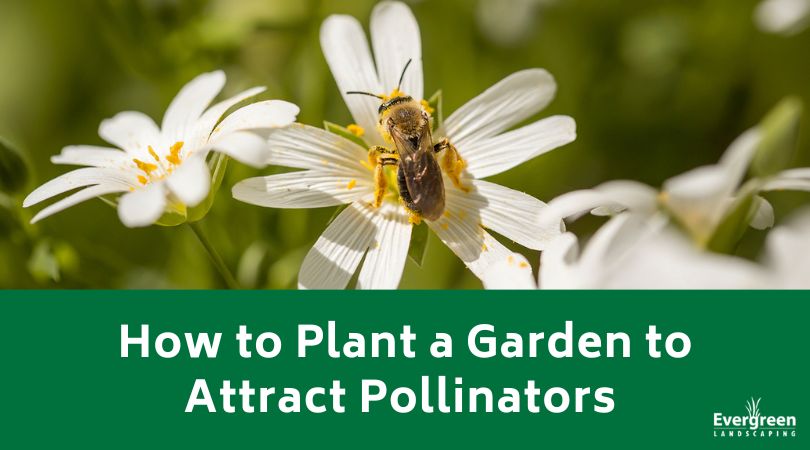
Fluttering butterflies, buzzing bees, and speedy hummingbirds are fun to watch as they zoom and flit around from plant to plant, but these key pollinators do much more than provide entertainment. They’re responsible for helping pollinate your vegetables and flowers. So, it makes sense that you’d want to attract as many to your yard as possible. But, how do you go about this? We’ll outline several tips for you below.
- Create Groupings of Plants
Did you know that a lot of pollinators are near-sighted? This means that it’s much more challenging for them to find flowers or plants if they’re spread around the yard. To fix this, try to plant your items in groups of three to five to mimic the natural planting style they’d encounter in nature. This gives a can’t-miss target for all of your pollinators to come in.
- Provide Shelter
Any pollinator you attract will need a place to hide and feel secure as they raise their young. Examples of spaces include a compost pile, hedge, longer grass, a dead tree, or soil that doesn’t have any mulch. Try to add shelter around your pollinator garden to entice them to come in, stay, and raise their young next to a safe hideout and a food source.
- Incorporate Native Plants
Ideally; you’ll include a few native plants in your landscape design in your pollinator garden. These plants are usually hardier and not as prone to issues with diseases and pests when you compare them to important plants. A few examples include purple coneflower, Liatris aspera, coreopsis, swamp milkweed, California poppy, and manzanita. If you’re not sure which native plants will thrive in your area, you can contact your local extension office to get a list of native plants. You can group them with non-native plants that have similar growing needs.
- Consider Planting Trees
Include shrubs and trees in your pollinator garden plans. A crabapple or maple tree will come alive with activity during the blooming period, and most pollinators will stick around for more blooms throughout the summer months. Shrubs like butterfly bush, viburnum, summersweet, and spirea all come packed with nectar-laden flowers that pollinators find impossible to resist. If you add these trees with your shade flowers, your pollinators will have layers of areas to visit. As a bonus, the trees can offer shelter.
- Stagger the Bloom Times
One big component to getting pollinators to stick around once you lure them in is to offer an ongoing nectar source. Also, consider the colors as different pollinators respond to different colors. Bees like yellow, blue, purple, and white, while hummingbirds are attracted to red-hued flowers. Butterflies love purple or red tones. Fill your yard with all these colors, and pick plants with different bloom times. Planting flowers in different heights, shapes, and growth habits will also help draw pollinators in.
- Don’t Forget the Water
Even pollinators like access to a nice water source, and it’s relatively easy to add one to your pollinator garden. Consider putting a bird bath in, or you can put a shallow pond or small fountain in. As a bonus, this can give you the sound of running water, and this is something very relaxing to listen to as you go about your day.
Contact Evergreen Landscaping
If you’re going to create a pollinator garden but you’re not sure where to start, contact us. Along with having knowledge of the native plants, we can help you set up a haven that draws the pollinators in all spring and summer long.
